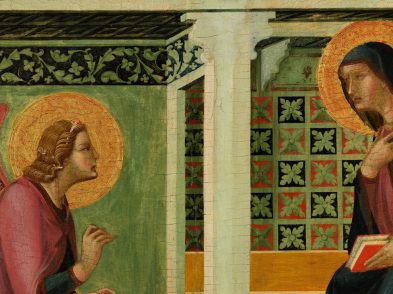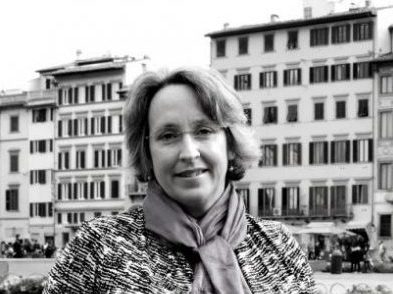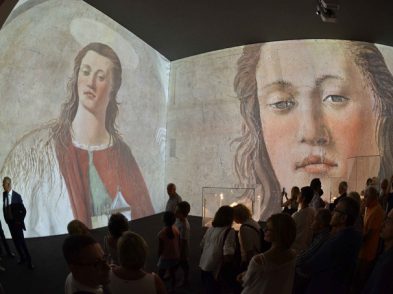For a few
short months last year in Rome, a fascinating exhibit, entitled Caravaggio:
Restauro Aperto allowed visitors to see art restorers working on one of
Caravaggio’s most intriguing paintings, the Adoration of the Shepherds. The exhibit, sponsored by Fastweb,
the Internet provider, and held in the lower chambers of Parliament, was
constantly sold out. Seeing restorers at work clearly taps into a collective
desire to see art come alive in a different way: work that is usually done
behind the scenes is in full view, and seeing the experts deftly handling the
artworks gives viewers a glimpse of the original artists’ process.
Much like literary translation, art restoration is a
thankless, silent profession that is often ignored because it isn’t terribly
sexy, it doesn’t sell anything, it doesn’t win awards and it is not
merchandisable. Those in the know, or even those who know just a little,
recognize that restorers need to be patient and dogged, both technically expert
yet creative, and they need to stay aware of the big picture, always keeping an
eye on the endgame, while still focused on the details.
With so much
artwork in need of care in Italy, one would think that there would be an army
of well-trained restorers, yet that is not the case. The country has two
important schools for art restoration, ISCR in Rome and the Opificio in
Florence, both under great financial strain these days. Organizations like
R.I.C.E:R.C.A., a restoration group in Arezzo, are discouraged from taking on
apprentices because there is no simple way of formalizing their assistance. The
restorers barely have enough money to cover their own expenses and don’t have
time to teach initiates while they work on projects. As Marzia Benini, the
spokesperson for R.I.C.E:R.C.A vehemently points out, the problem is that there
are no cultural politics that work in favor of art restoration.
Moreover,
the work is expensive, and those who support and fund restoration projects are
considered angels. Thus, in Arezzo, where I live, a group of angels created an
open restoration studio along the lines of the one that proved so popular in
Rome. In celebration of the 500th anniversary of Vasari’s birth, R.I.C.E:R.C.A.
art restoration group, together with assistance from a group of organizations,
set up Una Finestra sul Restauro, an exhibit that allowed visitors to see the
restoration of an altarpiece by Vasari, originally from Monte San Savino, which
had been damaged by overzealous restorers in the past. The piece, which
measures 397cm x 237cm and belongs to Sant’Agostino church in Monte San Savino,
portrays the Assumption of the Virgin and is signed and dated 1539. Although
originally scheduled for only 5 months, the exhibit ultimately ran for 13
months and 15 days. More than 4,000 people visited the studio, including
students and tourists. The open restoration afforded a wonderful chance to see
art restoration in action in an intimate environment. (Go to www.vasari500.com to hear about the
restorers’ experiences.)
At least 14 major offices and entities
contributed funding, time and assistance to open the restoration. Private
individuals also helped make the effort a success. But most of the credit goes
to the three main players in the project: Benini and her colleagues Paola
Baldetti and Isabella Droandi, who make up the consortium of R.I.C.E:R.C.A.
Their tenacity, patience and enthusiasm revealed what is perhaps the best (and
yet ultimately self-defeating) part of the Italian work ethic: where there is
passion, there is success.
The idea is
catching on. Currently there are a few ongoing live restoration projects in
Tuscany; see them below.
FLORENCE
Don’t miss
the rare opportunity of seeing restorers working on the Agnolo Gaddi frescoes
in the main nave of Santa Croce in Florence. I was amazed by the details in the
1380 wall paintings, especially the figures’ faces and clothing and the
animals. You can see up close how the restorers dealt with a 30-meter crack in
the wall without compromising the patina of age. Scavenger hunt: try to find
the painter, his lover and the painter’s father! And if you’re worried about
climbing around on scaffolding, don’t be. An elevator takes you up seven levels
to the roof and you descend a sturdy staircase. If you’re lucky, you’ll even see
restorers painstakingly working on the stunning crucifix by the Maestro di
Figline. Bring a camera. Children must be over 12. The tour, which lasts
approximately 40 minutes, is by reservation only. There are multiple tours each
day. Contact booking@santacroceopera.it or call 055/2466105.
For the past
year in Florence, Coop members, Friends of Tourism and Friends of the Uffizi
Gallery have joined for the Give the Gift of Restoration initiative. After
taking a special guided tour of lesser-known works at the Uffizi by restoration
professionals from the Mercurio Association, visitors may give donations
earmarked for restoration work. This winter 2,500 euro was collected and spent
on the urgent conservation of two portraits that hang in the first hall of the
Uffizi. For more information, call Amici del Turismo at 055/218413.
PISA
Simone
Martini’s polyptych is being restored live before visitors’ eyes at the Museum
of San Matteo. Visitors can learn about the scientific approach to the work
thanks to a touch screen installation, revealing details otherwise not visible
to the naked eye. Until April 30, 2012 at the Museo Nazionale di San Matteo
(Tuesday-Saturday, 8:30am-7:30pm; Sunday, 8:30am-1:30pm, tel. 050/541865).








